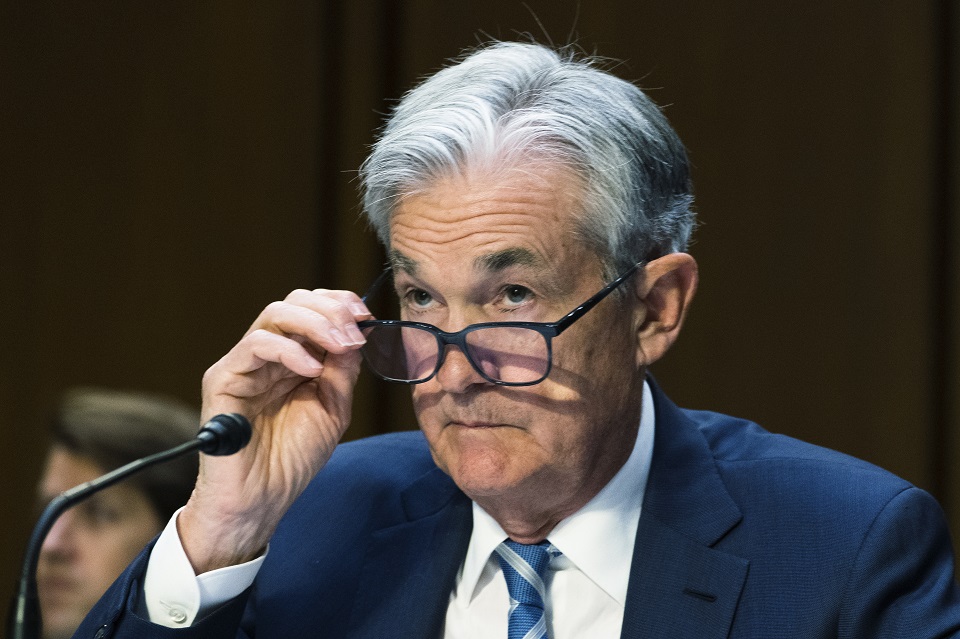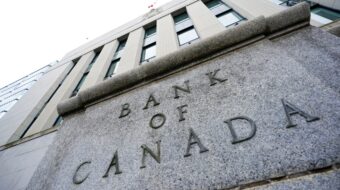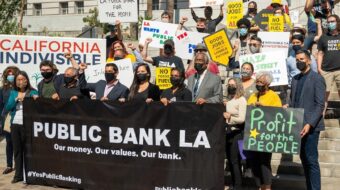
WASHINGTON (AP)—The Federal Reserve is facing stinging criticism for missing what observers say were clear signs that Silicon Valley Bank was at high risk of collapsing into the second-largest bank failure in U.S. history.
Critics point to many red flags surrounding the bank, including its rapid growth since the pandemic, its unusually high level of uninsured deposits, and its many investments in long-term government bonds and mortgage-backed securities, which tumbled in value as interest rates rose.
“It’s inexplicable how the Federal Reserve supervisors could not see this clear threat to the safety and soundness of banks and to financial stability,” said Dennis Kelleher, chief executive of Better Markets.
Industry analysts “have been publicly screaming about these very issues for many, many months going back to last fall,” Kelleher added.
The Fed was the primary federal supervisor of the bank, but it was also overseen by the California Department of Financial Protection and Innovation.
Now the consequences of the fall of Silicon Valley Bank, along with New York-based Signature Bank, are complicating the Fed’s upcoming decisions about how high to raise its benchmark interest rate in the fight against chronically high inflation.
Many economists say the central bank would likely have raised rates by an aggressive half-point Wednesday rather than the quarter-point that it chose. Its rate currently stands at about 5.1%, the highest level in 15 years.
“Absent the fallout from the bank failure, it may have been a close call, but I think it [inflation] would have tipped them towards a half-point (rate hike) at this meeting,” said Kathy Bostjancic, chief economist at Nationwide.
Last Monday, Fed Chair Jerome Powell announced that the Fed would review its supervision of Silicon Valley to understand how it might have better managed its regulation of the bank. The review will be conducted by Michael Barr, the Fed vice chair who oversees bank oversight, and will be publicly released May 1.
A Federal Reserve spokesperson declined to comment further.
Elizabeth Smith, a spokeswoman for the California Department of Financial Protection and Innovation, said, “We are actively investigating the situation and conducting a thorough review to ensure the Department is doing everything we can to protect Californians.”
By all accounts, Silicon Valley was an unusual bank. Its management took excessive risks by buying billions of dollars of mortgage-backed securities and Treasury bonds when interest rates were low. As the Fed continually raised interest rates to fight inflation, leading to higher rates on Treasury bonds, the value of Silicon Valley Bank’s holdings steadily lost value.
Most banks would have sought to make other investments to offset that risk. The Fed could have also forced the bank to raise additional capital.
The bank had grown rapidly. Its assets quadrupled in five years to $209 billion, making it the 16th-largest bank in the country. And roughly 94% of its deposits were uninsured because they exceeded the Federal Deposit Insurance Corporation’s $250,000 insurance cap.
That percentage was the second highest among banks with more than $50 billion in assets, according to ratings agency S&P. Signature had the fourth-highest percentage of uninsured deposits.
Such an unusually high proportion made Silicon Valley Bank highly susceptible to the risk that depositors would quickly withdraw their money at the first sign of trouble—a classic bank run—which is exactly what happened.
“I’m at a loss for words to understand how this business model was deemed acceptable by their regulators,” said Aaron Klein, a former congressional aide, now at the Brookings Institution, who worked on the Dodd-Frank banking regulation law that was passed after the 2008 financial crisis.
The bank failures will likely color an upcoming Fed review of rules that set out how much money large banks must hold in reserve. Barr said last year that he wanted to conduct a “holistic” review of those requirements, raising concerns in the banking industry that the review would lead to rules forcing banks to hold more reserves, which would limit their ability to lend.
Many critics also point to a 2018 law as softening bank regulations in ways that contributed to Silicon Valley’s failure. Pushed by the Trump administration with bipartisan support in Congress, the law exempted banks with $100 billion to $250 billion in assets—Silicon Valley’s size—from requirements that included regular examinations of how they would fare in tough economic times, known as “stress tests.”
Silicon Valley’s CEO, Greg Becker, had lobbied Congress in support of the rollback in regulations, and he served on the board of the Federal Reserve Bank of San Francisco until the day of the collapse.
Sen. Elizabeth Warren, a Democrat from Massachusetts, asked him about his lobbying in a letter released last week.
“These rules were designed to safeguard our banking system and economy from the negligence of bank executives like yourself—and their rollback, along with atrocious risk management policies at your bank, have been implicated as chief causes of its failure,” Warren’s letter said.
The 2018 law also provided the Fed with more discretion in its bank oversight. The central bank subsequently voted to further reduce regulation for banks the size of Silicon Valley.
In October 2019, the Fed voted to effectively reduce the capital those banks had to hold in reserve. Kelleher said the Fed still could have pushed Silicon Valley Bank to take steps to protect itself.
“Nothing in that law prevented in any way the Federal Reserve supervisors from doing their job,” Kelleher said.
We hope you appreciated this article. Before you go, please support great working-class and pro-people journalism by donating to People’s World.
We are not neutral. Our mission is to be a voice for truth, democracy, the environment, and socialism. We believe in people before profits. So, we take sides. Yours!
We are part of the pro-democracy media contesting the vast right-wing media propaganda ecosystem brainwashing tens of millions and putting democracy at risk.
Our journalism is free of corporate influence and paywalls because we are totally reader supported. At People’s World, we believe news and information should be free and accessible to all.
But we need your help. It takes money—a lot of it—to produce and cover unique stories you see in our pages. Only you, our readers and supporters, make this possible. If you enjoy reading People’s World and the stories we bring you, support our work by donating or becoming a monthly sustainer today.










